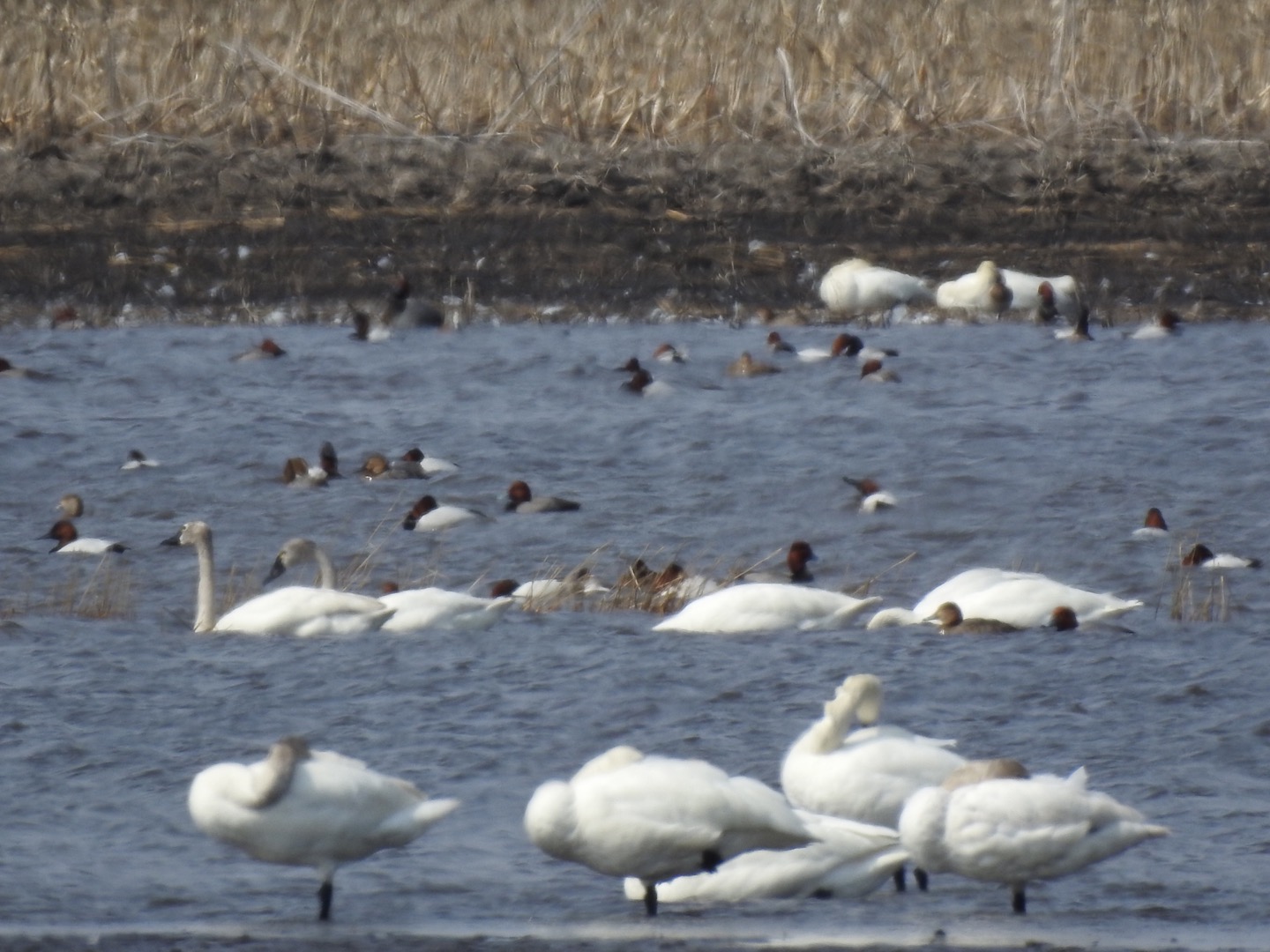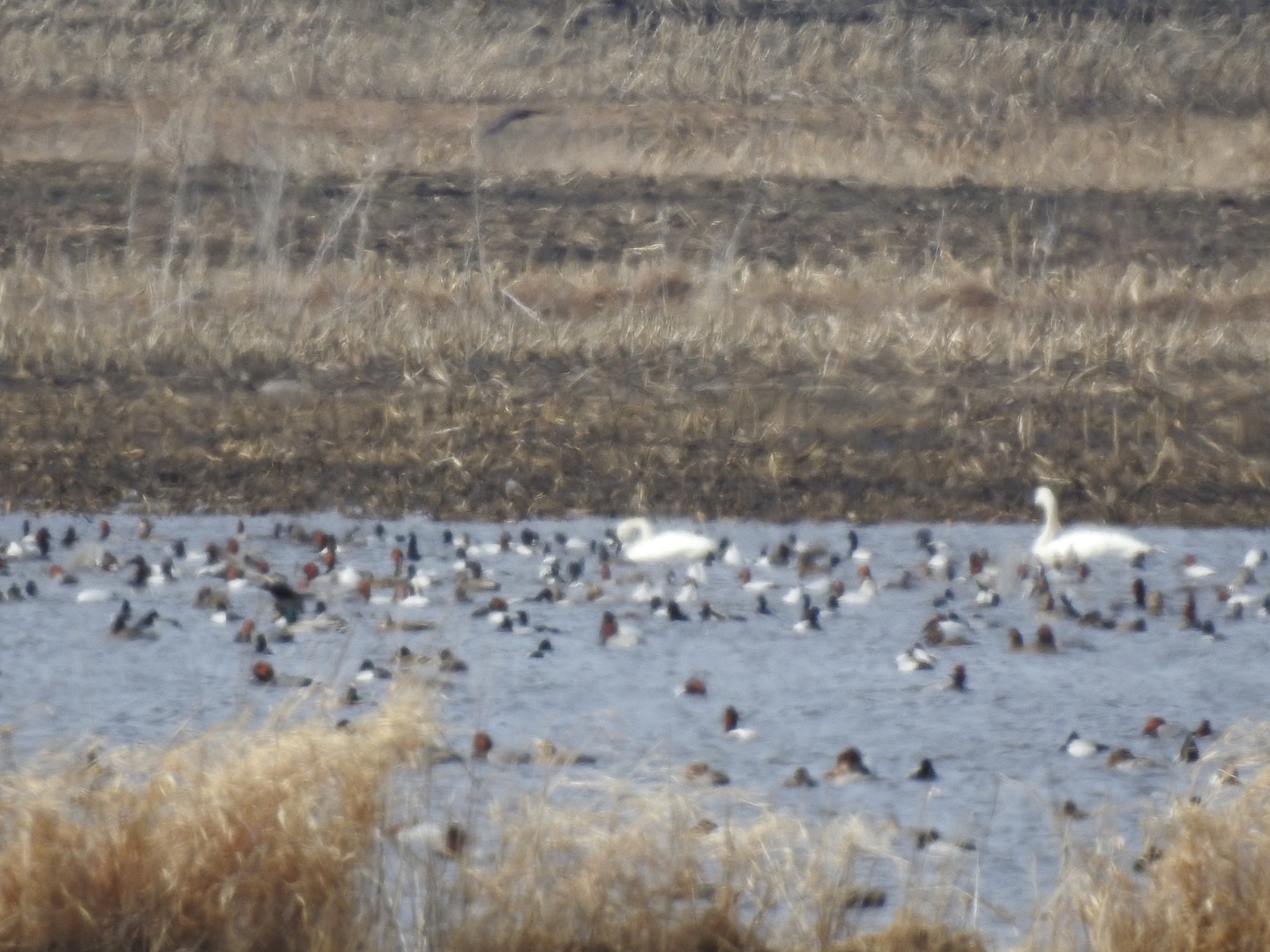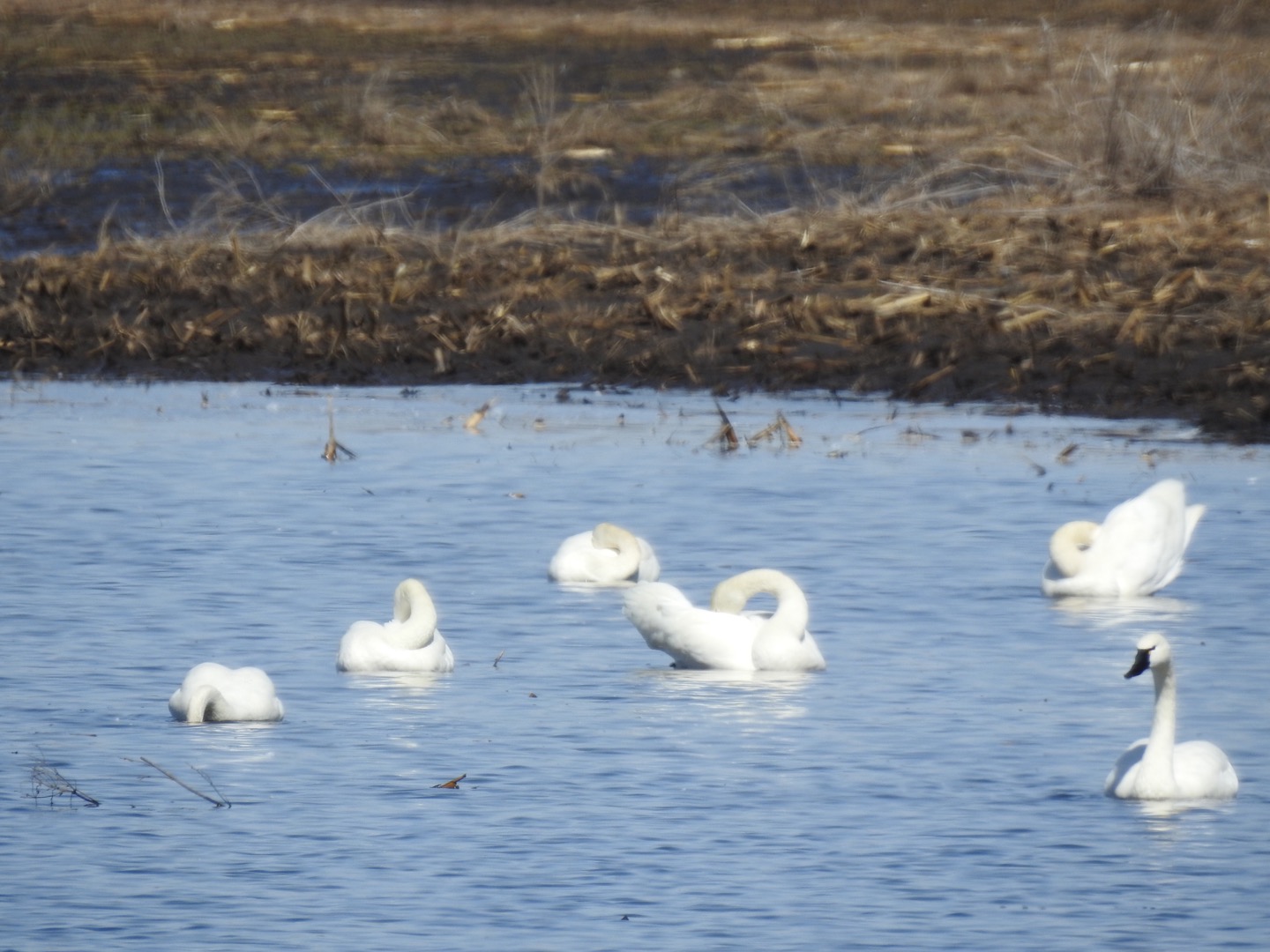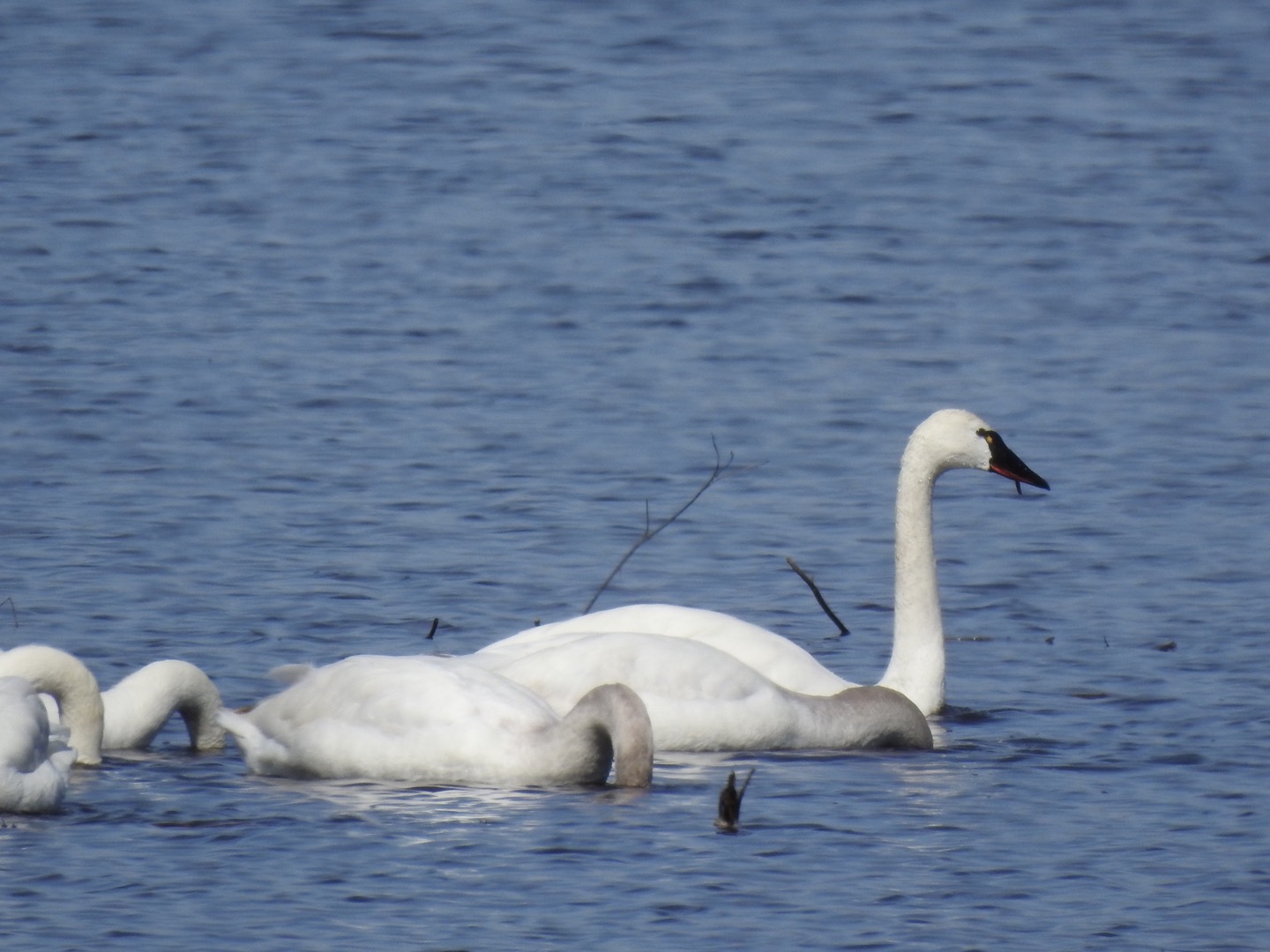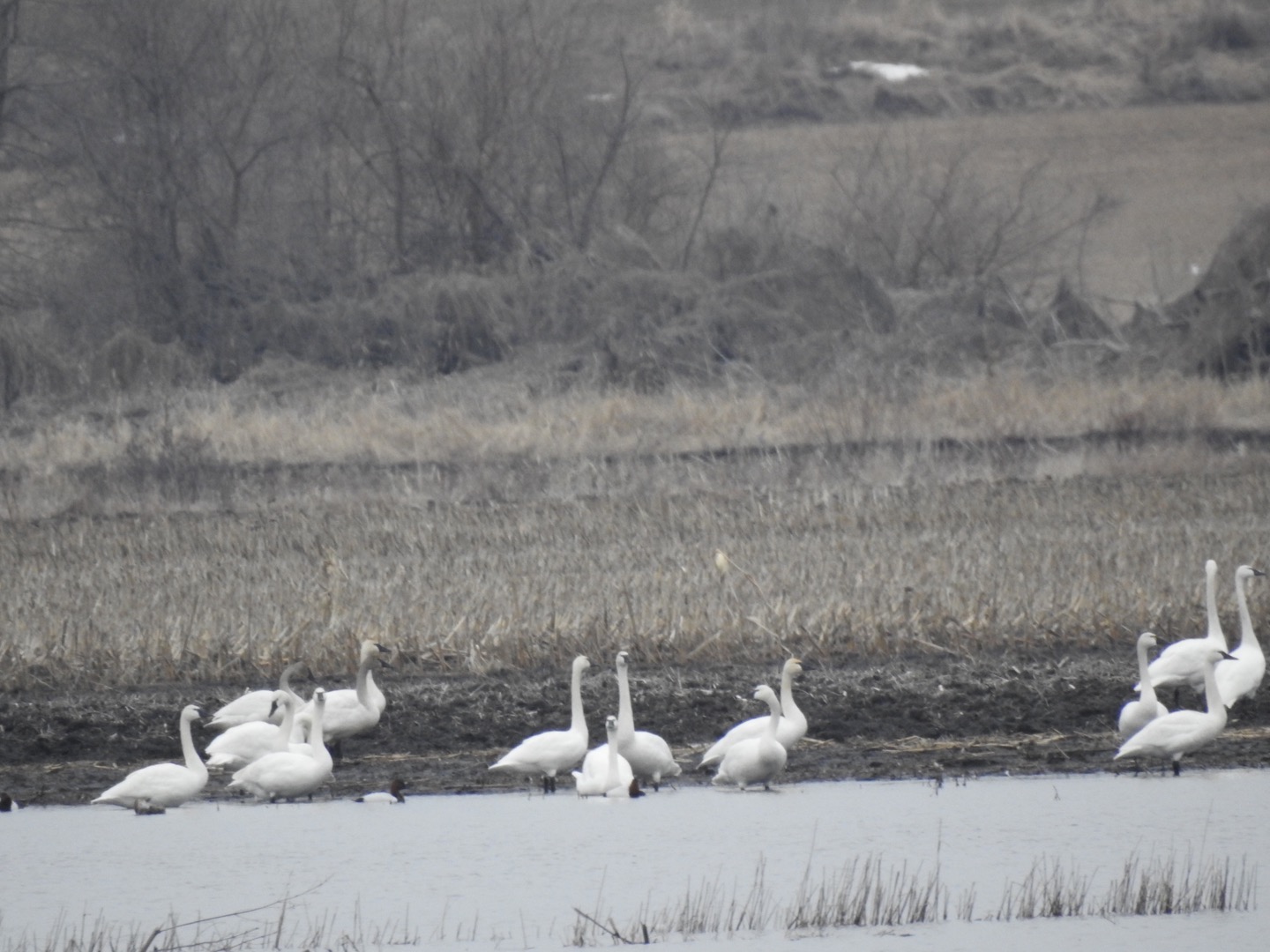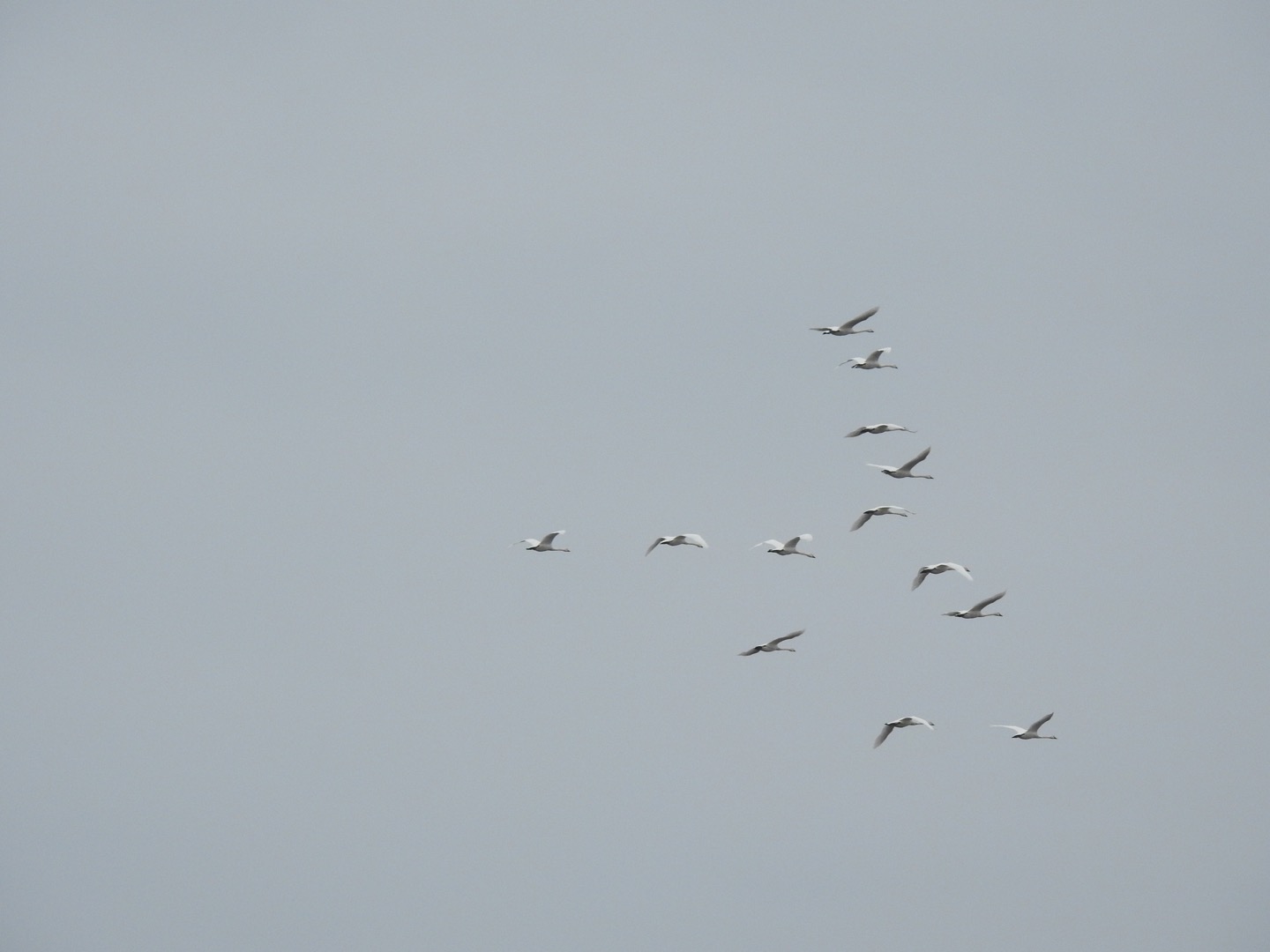I first knew swans to be nasty things. A mute swan on a neighborhood pond would lunge at me when I got too near, and the popular depiction of swans as graceful elegant birds for me morphed into a fear of their hissing aggressiveness.
Tundra swans, meanwhile, are beautiful Holarctic migrants, moving through Wisconsin each spring and fall in large flocks, often associating with diving ducks like canvasbacks and redheads. These diving ducks will access tubers and grain in the bottoms of ponds and flooded ponds, while the swans can do the same with their long necks.
Tundra swans can be identified by their all white feathers, their black bill, and a yellow spot on the lores. The birds will typically form pair bonds for life, and can live to be over 20 years old.
Unlike the non-native and stocked mute swan, which often sits solitary on a residential pond, the tundra swans congregate in great flocks of thousands of birds. In spring, these birds are moving from their wintering grounds on the Chesapeake Bay to breeding habitat on the Arctic Circle.
Photos by Drew Harry
In the past week, a flooded field north of Faville Grove Sanctuary has been occupied by over 1,000 tundra swans and thousands of waterfowl including northern pintails, canvasbacks, redheads, scaup, mallards, northern shovelers, and ring-necked ducks. These huge migratory flocks tend to be uncommon at Faville Grove, since there are not any huge open water wetlands within the sanctuary. However, a wet start to spring has provided excellent habitat for migrating waterfowl in these flooded fields.
It’s not hard to appreciate the huge flocks of birds, especially the large and alluring tundra swans, as they make their way on an 1,800 mile journey to the north.
Written by Drew Harry, Faville Grove Sanctuary land steward
Cover photo by Monica Hall



